Replacing a GFCI Outlet
by mje in Workshop > Home Improvement
421573 Views, 33 Favorites, 0 Comments
Replacing a GFCI Outlet
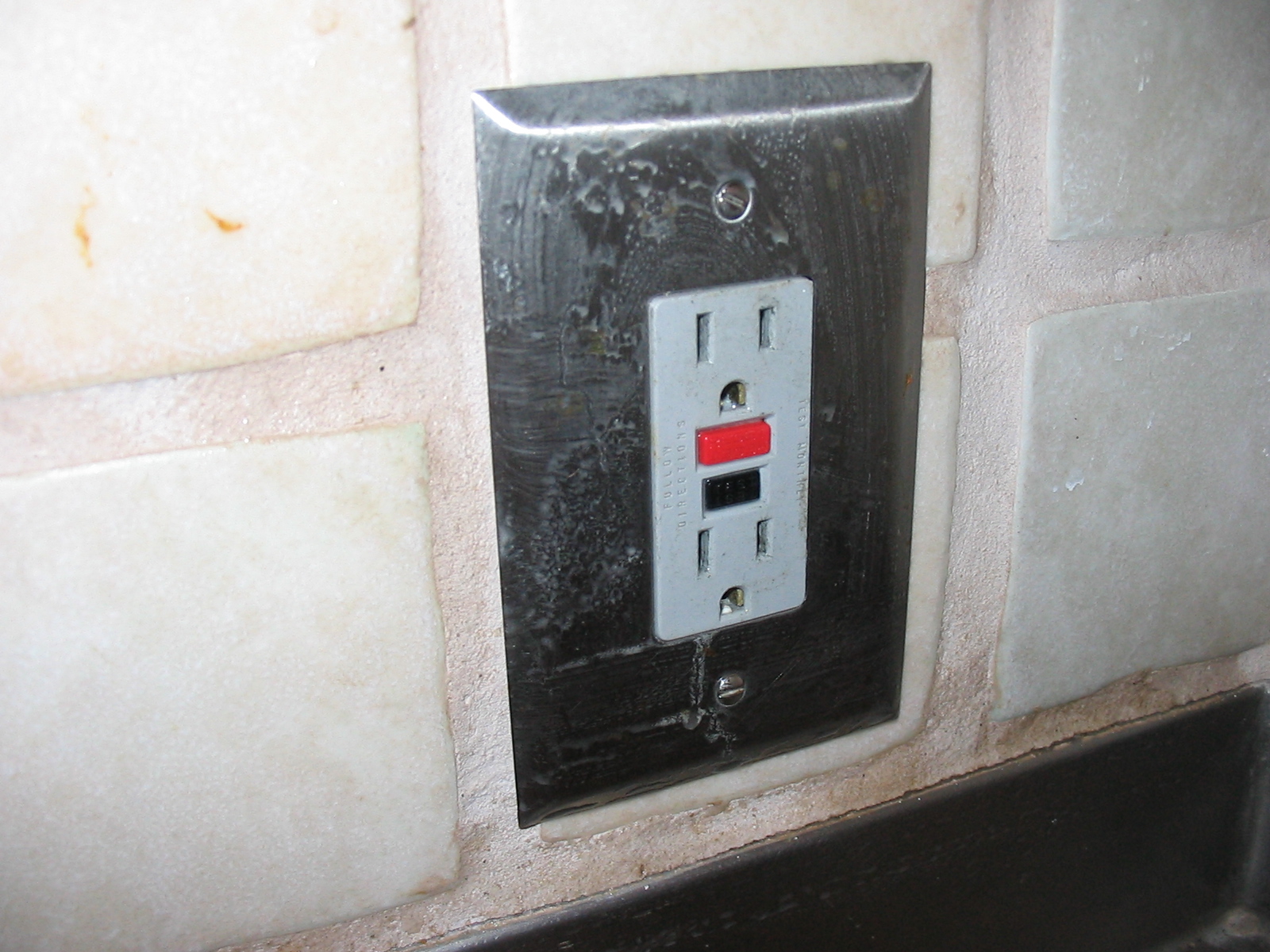
GFCI , or Ground Fault Circuit Interrupter, outlets are required by code on outdoor outlets, or any outlet near a source of water. The one exception is that outlets intended for motor-driven appliances, like washers and driers, don't need a GFCI, as GFCIs don't work with inductive loads.
They work well when new, but eventually fail and need to be replaced. Here's how to replace a GFCI outlet- or any outlet, really- or replace a standard outlet with a GFCI outlet.
They work well when new, but eventually fail and need to be replaced. Here's how to replace a GFCI outlet- or any outlet, really- or replace a standard outlet with a GFCI outlet.
What You'll Need
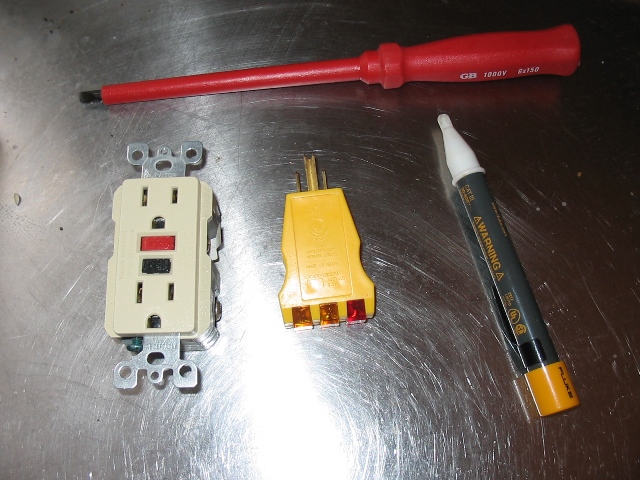
It doesn't take many tools to do this job- here's what you'll need:
- New GFCI outlet
- Insulated screwdriver
- Outlet tester
- Non-contact tester
- Electrician's pliers
All are inexpensive. The non-contact tester is used to see if a circuit is "hot"- that is, if there's voltage on it. The Outlet tester is used to make sure you've wired everything properly.
- New GFCI outlet
- Insulated screwdriver
- Outlet tester
- Non-contact tester
- Electrician's pliers
All are inexpensive. The non-contact tester is used to see if a circuit is "hot"- that is, if there's voltage on it. The Outlet tester is used to make sure you've wired everything properly.
Turn Off the Power!
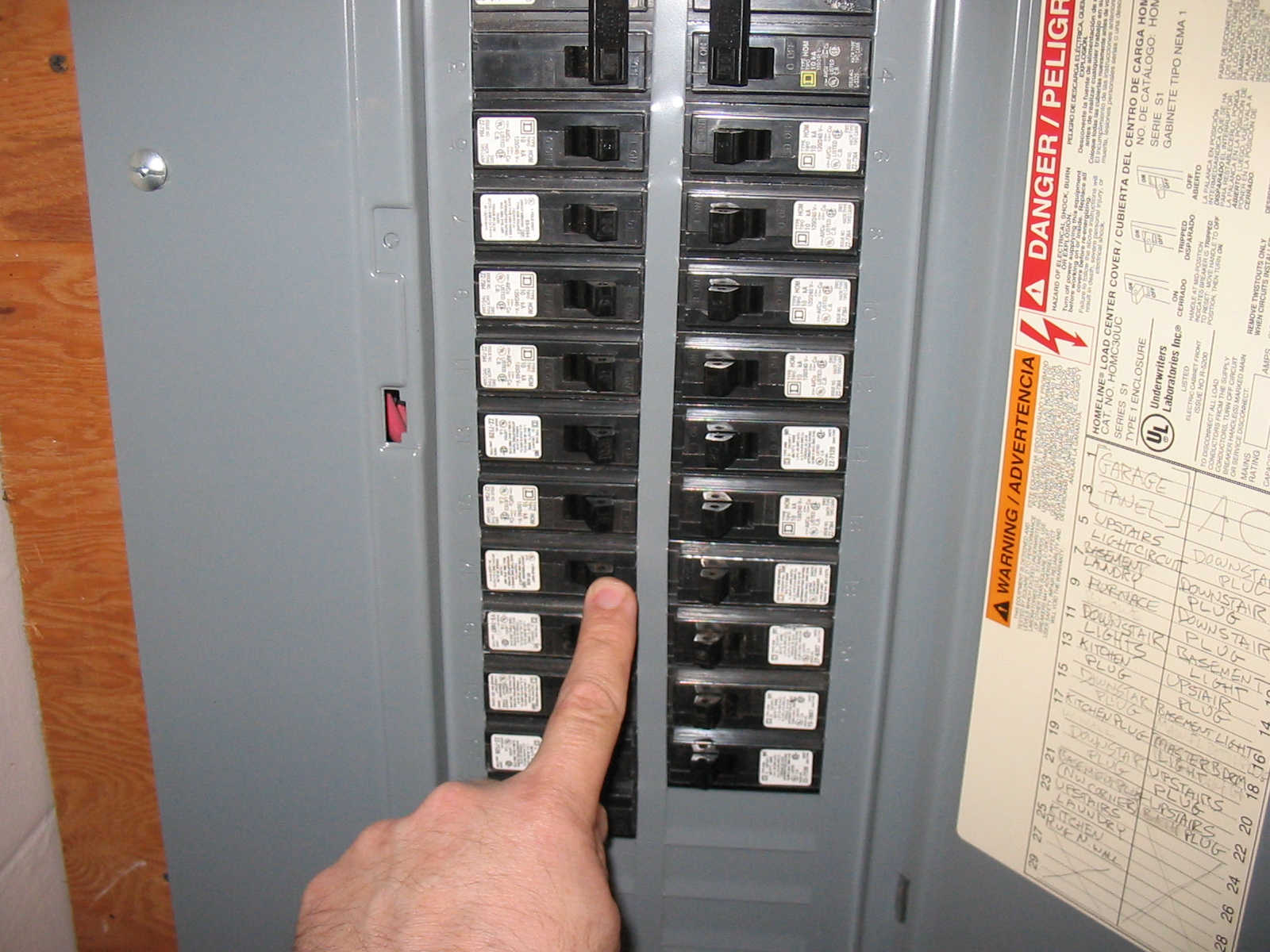
Go to your electrical panel and turn off the circuit for your outlet. Not sure which one it is? Don't worry, we'll check as we go along.
Remove the Faceplate
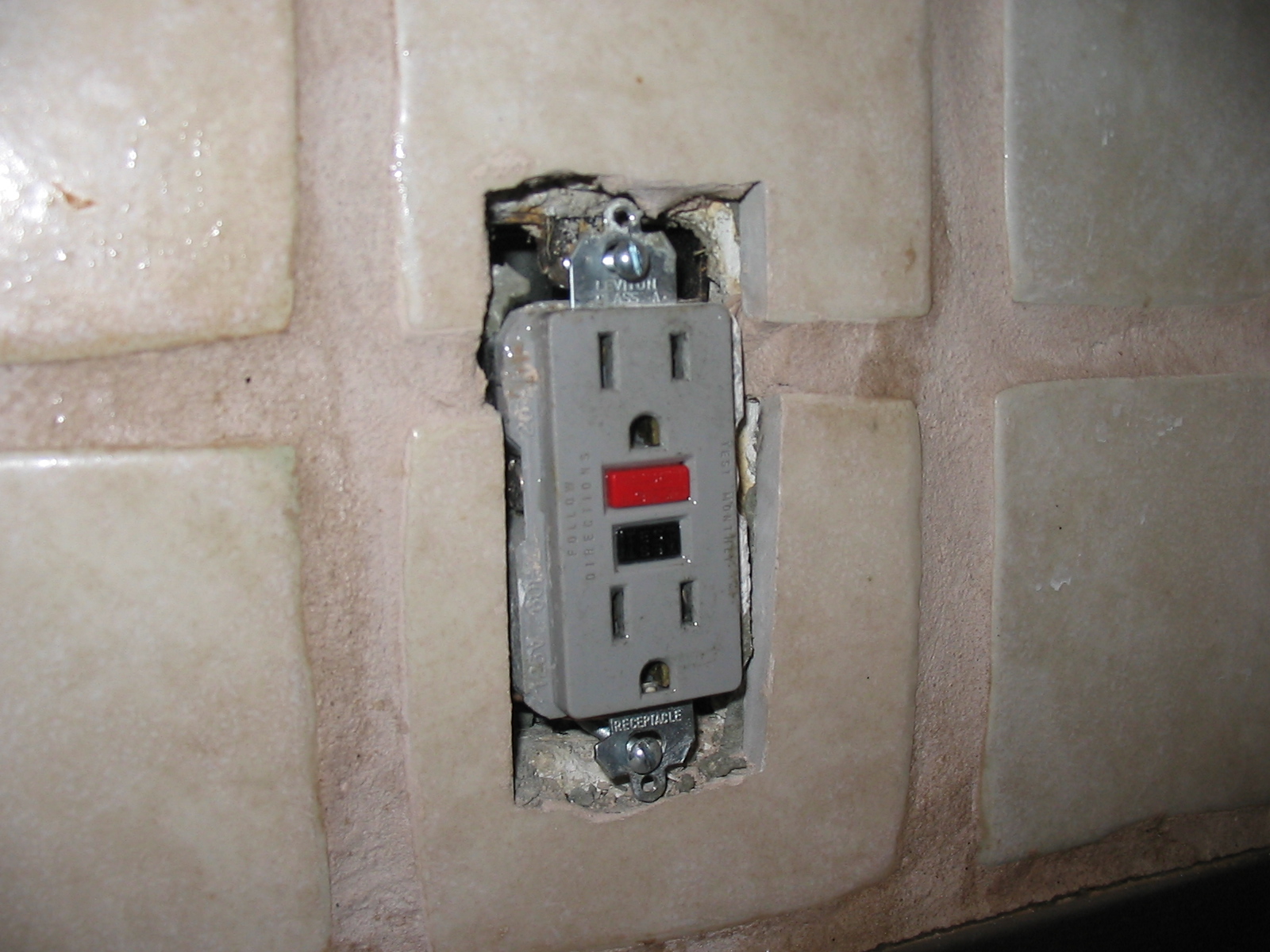
Unscrew the two short screws that hold the faceplate to the outlet, and put the plate and screws aside. If you put the screws in the upside down faceplate, there's less chance you'll lose them!
Remove the Outlet
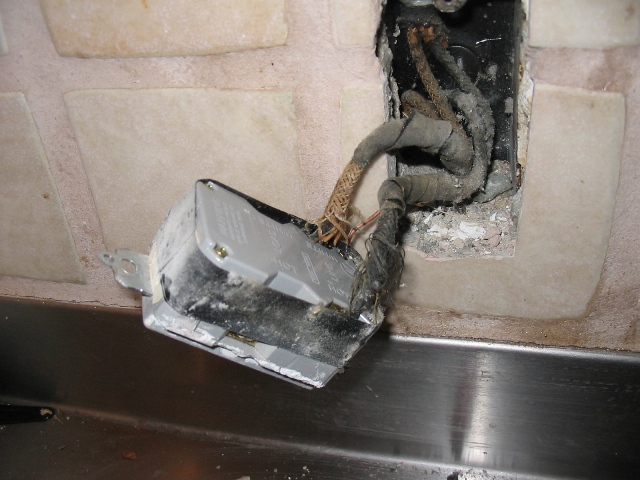
Remove the two long screws that hold the outlet to the box, and carefully withdraw it...
Double Check the Power!
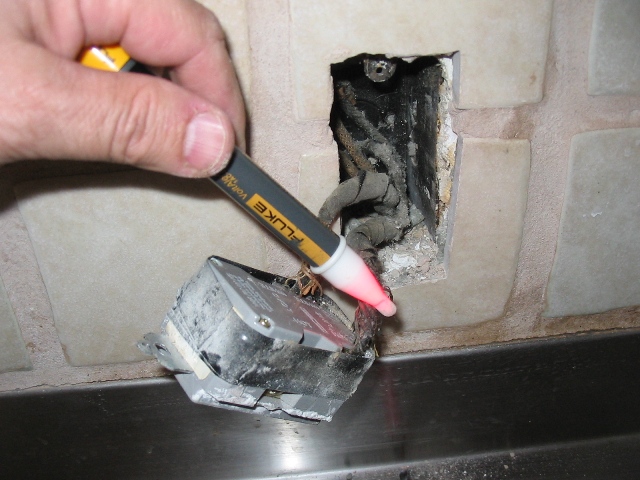
Using the non-contact tester, check the black wire... oops, looks like this one's still hot. Don't wait until you've pulled the outlet all the way out of the box- keep checking from the moment you remove the faceplate!
Notice that all the exposed connectors on this outlet are covered with a wrap of electrical tape- that's a good precaution whenever you install an outlet or switch. It helps prevent accidental shocks the next time someone services the box.
Notice that all the exposed connectors on this outlet are covered with a wrap of electrical tape- that's a good precaution whenever you install an outlet or switch. It helps prevent accidental shocks the next time someone services the box.
Prepare the New Outlet
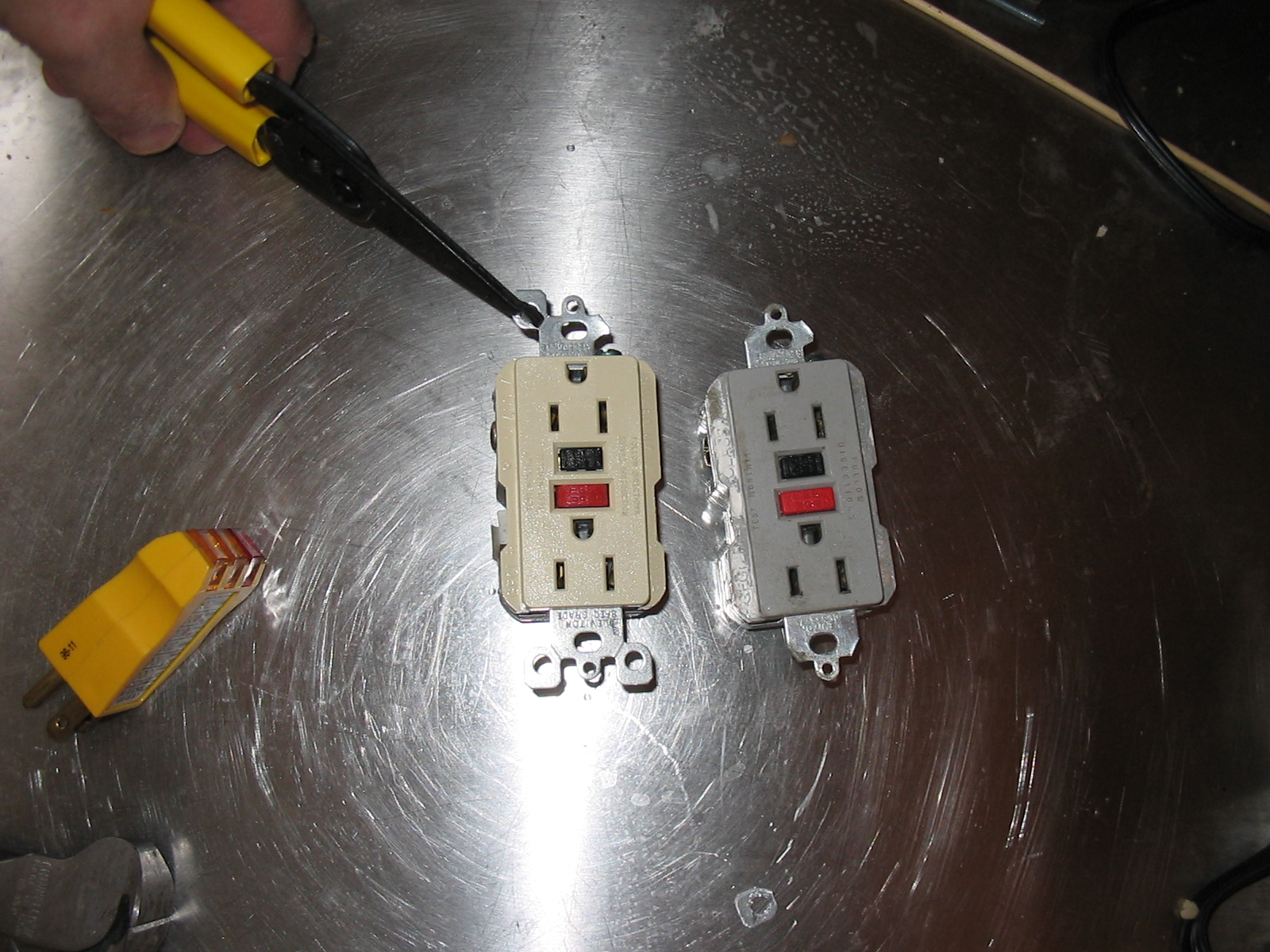
Note that the old outlet had the "ears" on the mounting tabs broken off to fit in this location. They're scored to make it easy to do this.
Here, I've grabbed the tab on the new outlet with my pliers, right next to the scored line. I'll bend each tab back and forth a few times and it'll snap right off.
Here, I've grabbed the tab on the new outlet with my pliers, right next to the scored line. I'll bend each tab back and forth a few times and it'll snap right off.
Wiring the New Outlet
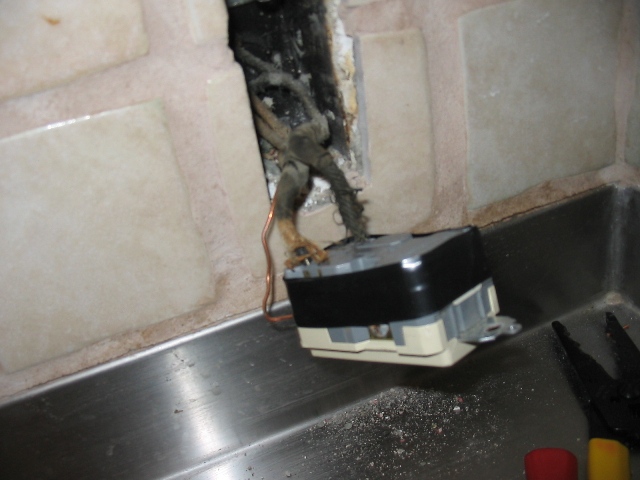
Your GFI outlet has five different connectors, and it's important to know which is used for what.
The ground screw is connected to the ground wires coming and going to the box.
There are two sets of connectors for hot (black) and neutral (white) wires. One set, labeled LINE, is used for power coming in to the box, and the other, labeled LOAD, for outlets that will be "downstream" of the GFCI, and be protected by it. Make sure you know which is which- the old outlet will be labeled, as will the new.
If you can't see the markings on the old outlet, turn the power on briefly, and use your non-contact tester to find the hot wire- that's the one bringing power into the box. You'll connect that wire, and its white companion, to the LINE connectors. (And then turn the power off again.)
This GFCI outlet has both push-in and screw terminal connectors; some old timers (and some new-timers) will only use the screw terminals, but actually, the push-in connectors are more reliable, according to the GFCI makers.
Make sure the wires are stripped to the right length- there's a gauge right on the side of the outlet.
I've pushed the wires into the holes, tightened the screws, and put a couple wraps of tape around the outlet. Now it's time to reinstall.
The ground screw is connected to the ground wires coming and going to the box.
There are two sets of connectors for hot (black) and neutral (white) wires. One set, labeled LINE, is used for power coming in to the box, and the other, labeled LOAD, for outlets that will be "downstream" of the GFCI, and be protected by it. Make sure you know which is which- the old outlet will be labeled, as will the new.
If you can't see the markings on the old outlet, turn the power on briefly, and use your non-contact tester to find the hot wire- that's the one bringing power into the box. You'll connect that wire, and its white companion, to the LINE connectors. (And then turn the power off again.)
This GFCI outlet has both push-in and screw terminal connectors; some old timers (and some new-timers) will only use the screw terminals, but actually, the push-in connectors are more reliable, according to the GFCI makers.
Make sure the wires are stripped to the right length- there's a gauge right on the side of the outlet.
I've pushed the wires into the holes, tightened the screws, and put a couple wraps of tape around the outlet. Now it's time to reinstall.
Replace the Outlet

Carefully push the outlet into the box, and replace the two screws that hold it in. Don't make them too tight- only screw them in far enough so that the outlet is almost flush with the wall.
Replace the Coverplate and Test
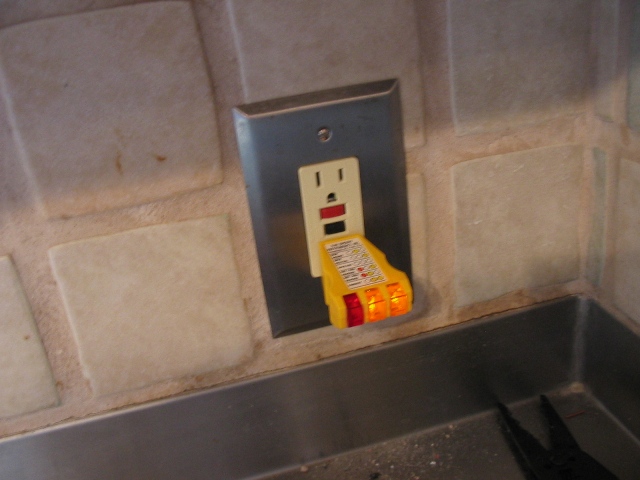
Reattach the cover plate, and turn the power back on.
Now plug in your circuit tester. You should see the two amber lights light up, but not the red light.
Push the test button. You should hear a snap, and all the lights will go out.
Push the reset button, and the amber lights should go back on again. If they did, congratulations. You're done.
Now plug in your circuit tester. You should see the two amber lights light up, but not the red light.
Push the test button. You should hear a snap, and all the lights will go out.
Push the reset button, and the amber lights should go back on again. If they did, congratulations. You're done.